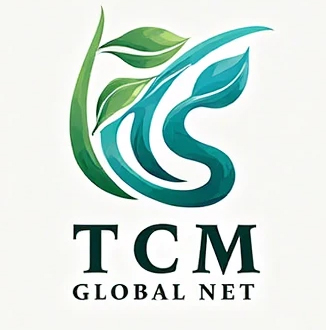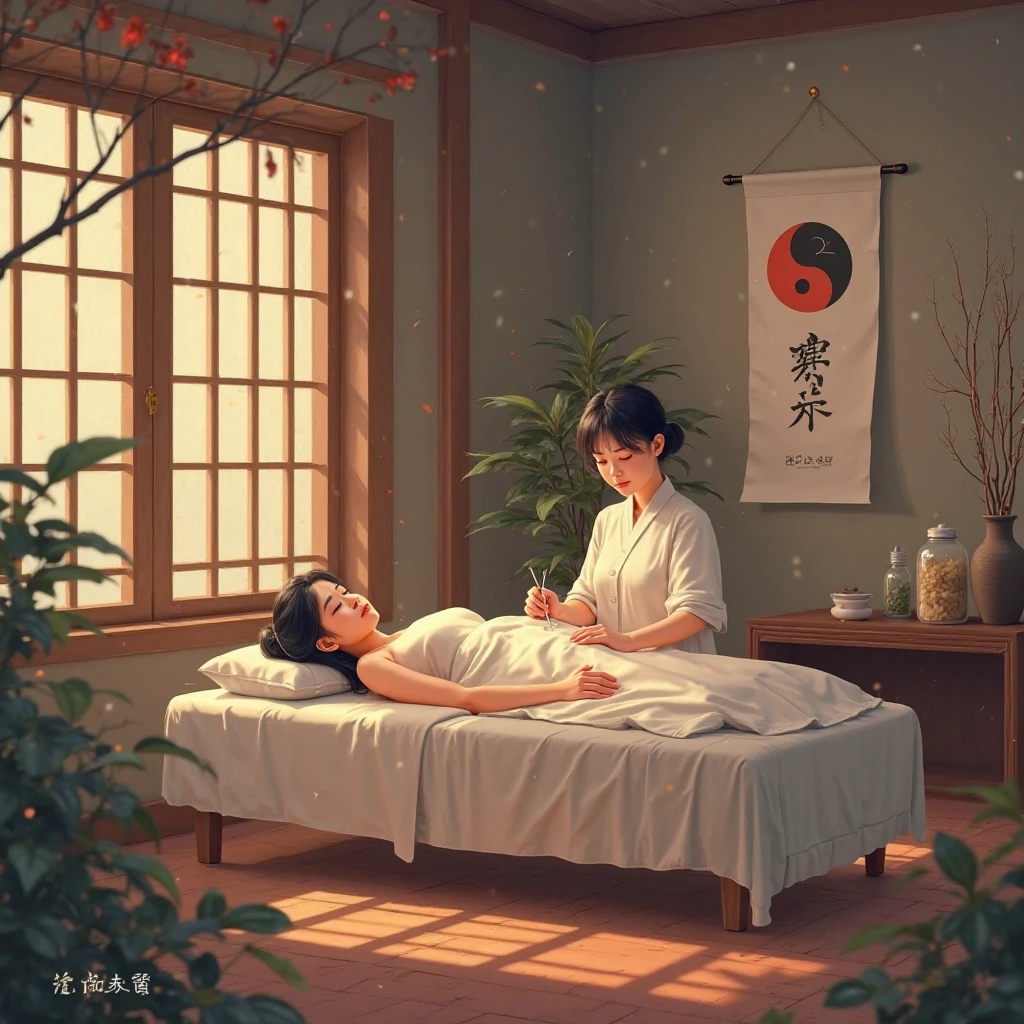What is PMS and its TCM Treatment Methods
Definition and Symptoms of PMS
Premenstrual Syndrome (PMS) refers to the physical and emotional symptoms that women may experience 1-2 weeks before their period, such as mood swings, breast tenderness, bloating, fatigue, and headaches. Traditional Chinese Medicine (TCM) believes that PMS is mainly related to liver qi stagnation, which affects the smooth flow of qi and blood, leading to various discomforts.
How Does TCM Treat PMS?
TCM offers various methods to manage PMS:
- Acupuncture: By stimulating specific acupoints to regulate the flow of qi and blood, studies have shown that acupuncture is more effective than sham acupuncture and medication. Commonly used acupoints include Spleen 6 (SP6), Liver 3 (LR3), and Ren 4 (RN4) (Acupuncture for Premenstrual Syndrome).
- Chinese Herbal Medicine: Formulas like Jia-Wei-Xiao-Yao-San are commonly used to soothe the liver and regulate qi, alleviating emotional and physical discomforts (Identifying Chinese herbal medicine for PMS).
- Lifestyle Adjustments: It is recommended to avoid cold foods, consume warm foods, engage in moderate exercise like yoga, and manage stress through meditation.
Duration and Onset of PMS
PMS symptoms typically start 1-2 weeks before menstruation and gradually disappear after the period begins, with the duration varying from person to person. TCM believes that symptoms are related to changes in qi and blood during the menstrual cycle, which can be adjusted through treatment (Premenstrual Syndrome (PMS): Symptoms & Treatment).
These keywords indicate a strong demand from users for the definition, symptoms, duration, and relief methods of PMS, with a particular focus on how TCM provides solutions.
Definition and Symptoms of PMS
PMS refers to the physical and emotional changes that women may experience 1-2 weeks before their period, affecting about 80% of women of reproductive age. Common symptoms include mood swings, breast tenderness, bloating, fatigue, irritability, and depression (What Is PMS?).
In TCM, PMS is considered a result of liver qi stagnation leading to the obstruction of qi and blood, manifesting as emotional disturbances and physical discomforts such as breast tenderness and abdominal bloating. Other patterns like spleen deficiency or kidney yang deficiency may also be involved, requiring assessment based on individual constitution (Manage Premenstrual Syndrome with TCM).
TCM Treatment Methods for PMS
TCM offers various methods to manage PMS, specifically including:
Acupuncture Treatment
Acupuncture regulates the flow of qi and blood by stimulating specific acupoints, and studies have shown its effectiveness for PMS. A 2019 meta-analysis found that acupuncture significantly improved the effectiveness rate of PMS, outperforming medication and sham acupuncture (Acupuncture for Premenstrual Syndrome). Another study from 2011 showed that acupuncture had a risk ratio of 1.55 (95% CI 1.33–1.80, P < 0.00001) for improving symptoms compared to the control group, with commonly used acupoints including Spleen 6 (SP6), Liver 3 (LR3), and Ren 4 (RN4) (Acupuncture for premenstrual syndrome).
Acupuncture not only alleviates physical symptoms but also improves emotional issues such as irritability and anxiety, making it suitable for use 1-2 weeks before menstruation.
Chinese Herbal Medicine Treatment
Chinese herbal medicine is tailored to individual patterns, with common formulas like Jia-Wei-Xiao-Yao-San (Jia-Wei-Xiao-Yao-San), accounting for 37.5% of PMS prescriptions in Taiwan, primarily used to soothe the liver and regulate qi, alleviating emotional and physical discomforts (Identifying Chinese herbal medicine for PMS).
Other herbs that may be used include Dong Quai, commonly used for women’s health issues such as irregular menstruation and dysmenorrhea, which may help manage PMS symptoms (Say Goodbye to PMS Symptoms with Chinese Herbal Remedies).
Other TCM Therapies
- Moxibustion: By burning mugwort near acupoints, it warms and dispels cold, aiding in the relief of PMS symptoms.
- Tui Na: TCM massage promotes the circulation of qi and blood, particularly suitable for relieving abdominal bloating and muscle tension.
Duration and Onset of PMS
PMS symptoms typically start 1-2 weeks before menstruation and gradually disappear after the period begins, with the duration varying from person to person (Premenstrual Syndrome (PMS): Symptoms & Treatment).
TCM believes that symptoms are related to changes in qi and blood during the menstrual cycle, with the premenstrual phase being a relatively excess condition, and treatment can be targeted to adjust the flow of qi and blood, reducing symptoms (Manage Premenstrual Syndrome with TCM).
TCM Lifestyle Recommendations
In addition to professional treatments, TCM also recommends the following lifestyle adjustments:
- Diet: Avoid cold and raw foods, especially before menstruation, to prevent aggravating qi stagnation and cramps. It is recommended to consume warm foods like soups, and increase cruciferous vegetables (such as broccoli) to balance hormones (How to Treat PMS With Acupuncture and TCM).
- Exercise: Engage in moderate exercise like yoga, tai chi, or walking to promote the flow of qi and blood, and relieve stress. Avoid excessive strenuous exercise before menstruation to prevent qi depletion (3 Essential Tips to Banish PMS For Good).
- Stress Management: Relieve emotional stress through meditation, deep breathing, or qigong to reduce liver qi stagnation (Stuck Type TCM Patterns: Diet and Lifestyle Tips).
- Sleep: Maintain regular sleep to support overall health and hormone balance.
These recommendations can help women naturally alleviate PMS symptoms in their daily lives.
Evidence and Controversy
Studies support the effectiveness of acupuncture and Chinese herbal medicine for PMS, but individual differences are significant, and the effects may vary. Some studies show that the timing of acupuncture intervention does not significantly affect the efficacy (Acupuncture for Premenstrual Syndrome), but the controversy lies in the lack of long-term effects and standardized treatment protocols. TCM emphasizes personalized treatment, making large-scale standardized research challenging, and further validation is needed.
Table: Common TCM Treatments and Corresponding PMS Symptoms
| Treatment Method | Main Function | Common PMS Symptoms | Evidence Support |
|---|---|---|---|
| Acupuncture | Regulates qi and blood, alleviates emotional and physical discomforts | Mood swings, breast tenderness | 2019 meta-analysis, RR 1.55 (Acupuncture for PMS) |
| Chinese Herbal Medicine (Jia-Wei-Xiao-Yao-San) | Soothes the liver, regulates qi, balances hormones | Irritability, bloating | Taiwan database, 37.5% (Identifying CHM for PMS) |
| Lifestyle Adjustments | Promotes the flow of qi and blood, reduces stress | Fatigue, low mood | Expert recommendations, lack of large RCT support |
Conclusion
Based on trending keywords, TCM websites can attract target users by introducing the definition, symptoms, TCM treatment methods (such as acupuncture and Chinese herbal medicine), and lifestyle recommendations for PMS. The content should focus on practicality and scientific evidence, ensuring SEO optimization, while also providing personalized consultation services to enhance user trust.
You can check out previous articles on professional treatments for menstrual and gynecological issues: 《Women’s Low Menstrual Volume: A Comprehensive Interpretation and Adjustment Plan Combining Traditional Chinese and Western Medicine》《Detailed Explanation of the Causes, Symptoms, and Combined Traditional Chinese and Western Medicine Treatment Plan for Ovarian Cysts》
Key Citations
- Acupuncture for Premenstrual Syndrome at Different Intervention Time: A Systemic Review and Meta-Analysis
- Identifying Chinese herbal medicine for premenstrual syndrome: implications from a nationwide database
- Manage Premenstrual Syndrome with TCM – Body with Soul
- How to Treat PMS With Acupuncture and TCM – Art of Wellness
- What Is PMS? – WebMD
- Premenstrual Syndrome (PMS): Symptoms & Treatment – Cleveland Clinic
- Say Goodbye to PMS Symptoms with Chinese Herbal Remedies – Ashland Family Acupuncture
- 3 Essential Tips to Banish PMS For Good – TCM World
- Stuck Type TCM Patterns: Diet and Lifestyle Tips – Amy Galvan
- Acupuncture for premenstrual syndrome: a systematic review and meta-analysis of randomised controlled trials – Wiley Online Library


Leave a Reply